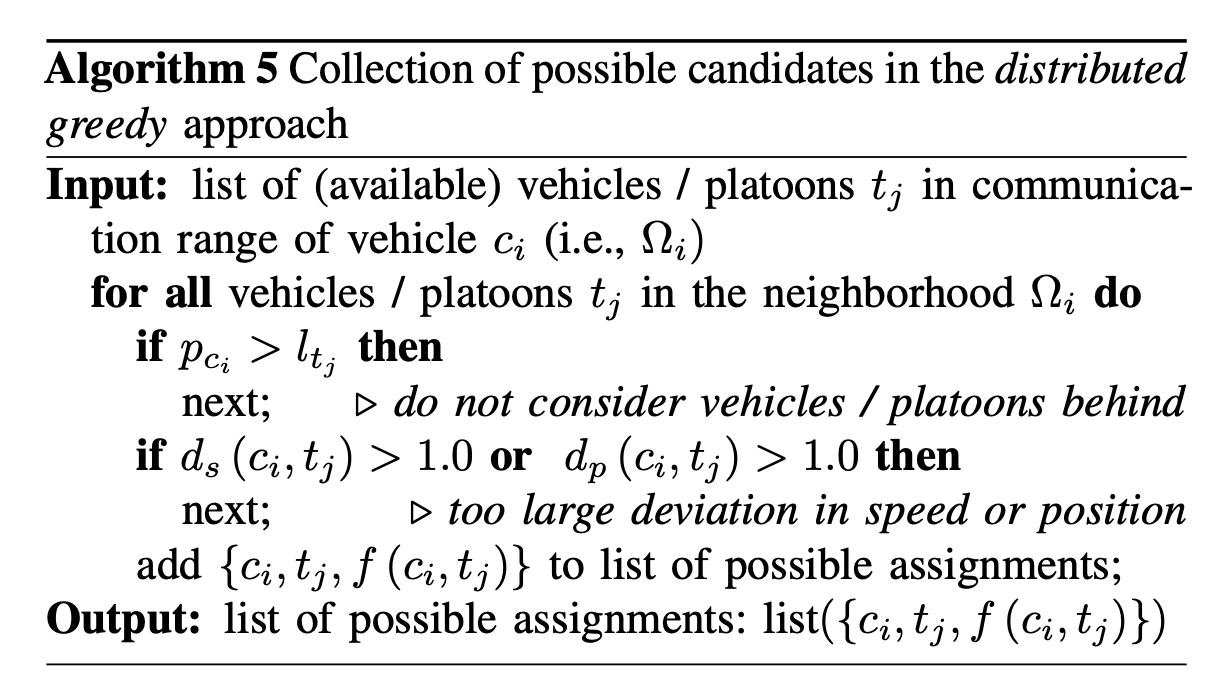News and Announcements

Tutorial Session at IEEE MeditCom 2024
July 12, 2024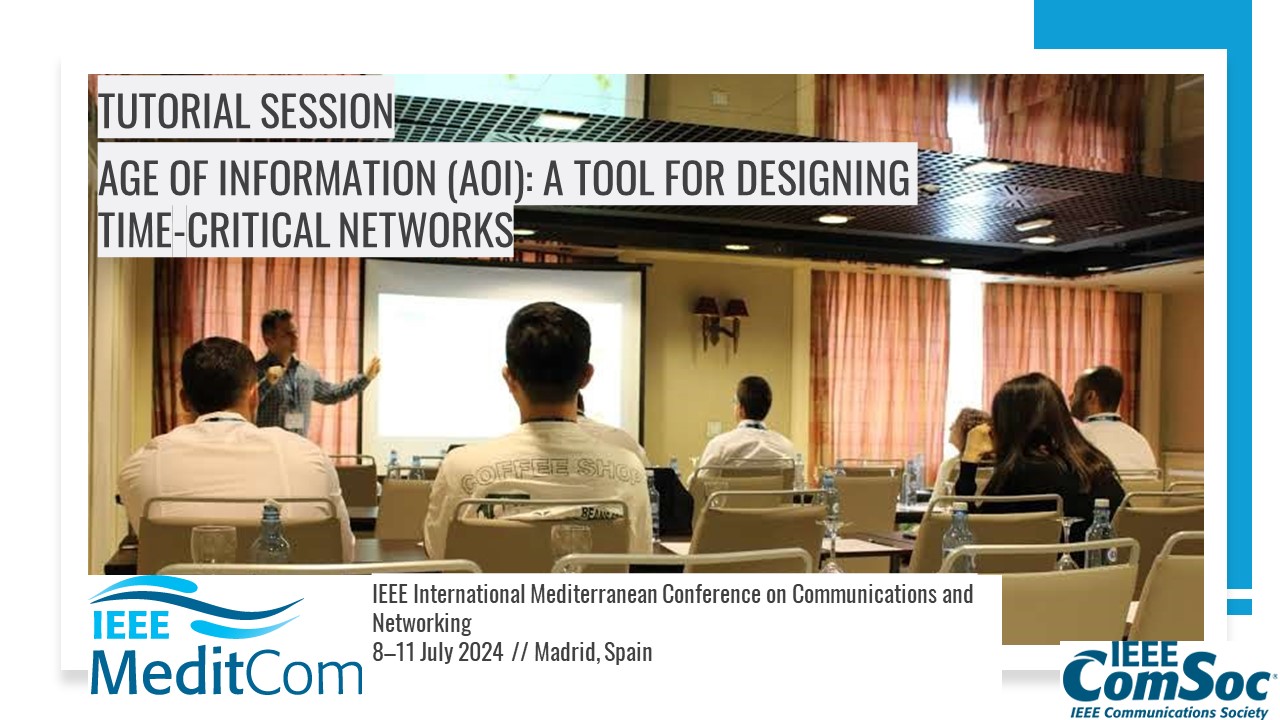
Jorge Torres Gómez gave a tutorial titled "Age of Information (AoI): A Tool for Designing Time-Critical Networks" at theIEEE International Mediterranean Conference on Communications and Networking (MeditCom 2024), which was held in Madrid, Spain. The tutorial was prepared in collaboration with Nikolaos Pappas from Linköping University in Sweeden. The session introduced the role of Age of Information in designing real-time networks. The concept was revisited and various uses cases and hands-on activities were presented to optimize the network operation.
(link to more information)New IEEE Transactions on Intelligent Transportation Systems article
July 08, 2024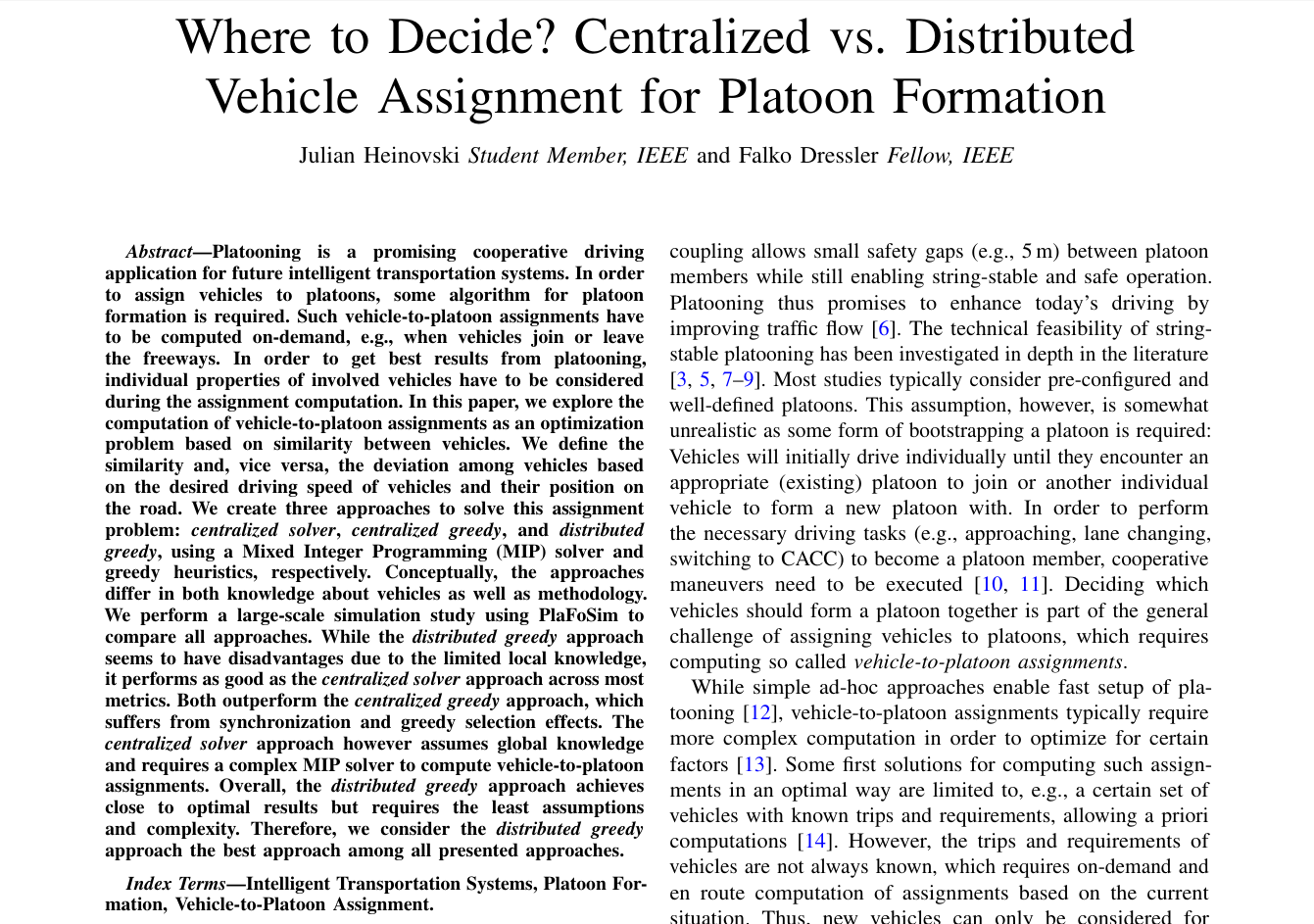
Our article Where to Decide? Centralized vs. Distributed Vehicle Assignment for Platoon Formation has been accepted for publication in IEEE Transactions on Intelligent Transactions Systems. In this work, we explored the computation of vehicle-to-platoon assignments as an optimization problem based on similarity between vehicles. For this, we created three approaches to solve the assignment problem: centralized solver, centralized greedy, and distributed greedy, using a Mixed Integer Programming (MIP) solver and greedy heuristics, respectively.
(link to more information)Contributions to Berlin 6G Conference
July 02, 2024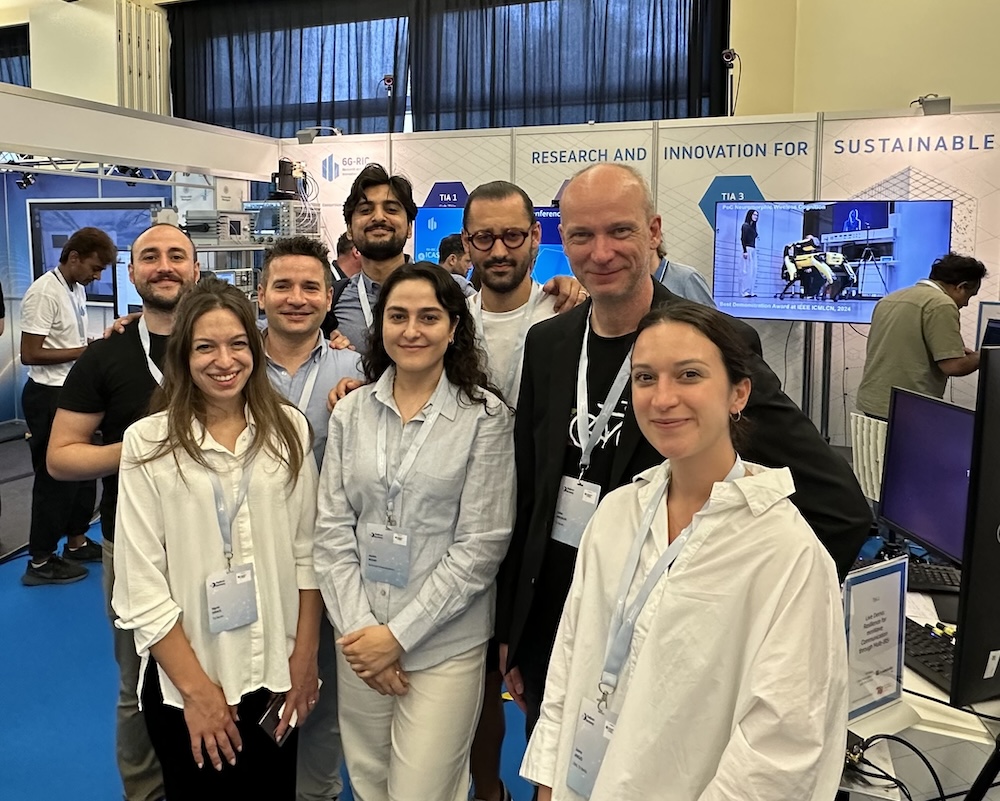
The Telecommunication Networks Group (TKN) team has been showcasing our developments towards 6G at the Berlin 6G Conference. Our focus this time is on pyhisical layer, RIS, and ICAS. We are also co-organizer as part of 6G-Plattform.New Elsevier Computer Communications article
July 01, 2024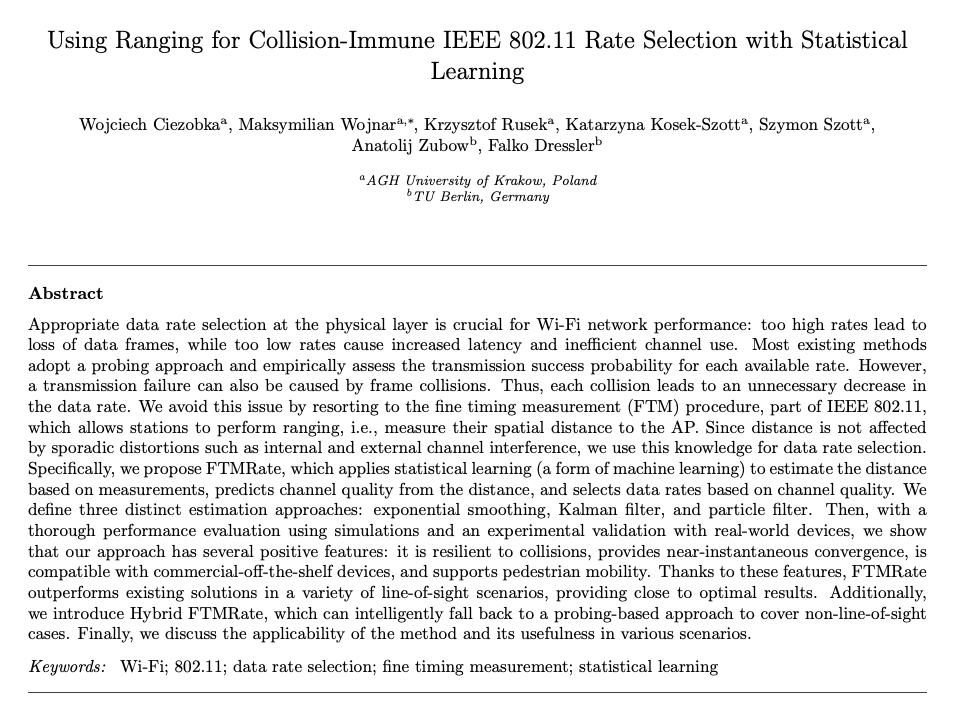
Our article Using Ranging for Collision-Immune IEEE 802.11 Rate Selection with Statistical Learning has been accepted for publication in Elsevier Computer Communications. We propose FTMRate, which applies statistical learning (a form of machine learning) to estimate the distance based on measurements, predicts channel quality from the distance, and selects data rates based on channel quality. We show that our approach has several positive features: it is resilient to collisions, provides near-instantaneous convergence, is compatible with commercial-off-the-shelf devices, and supports pedestrian mobility.
(link to more information)New IEEE Transactions on Molecular, Biological and Multi-Scale Communications article
June 27, 2024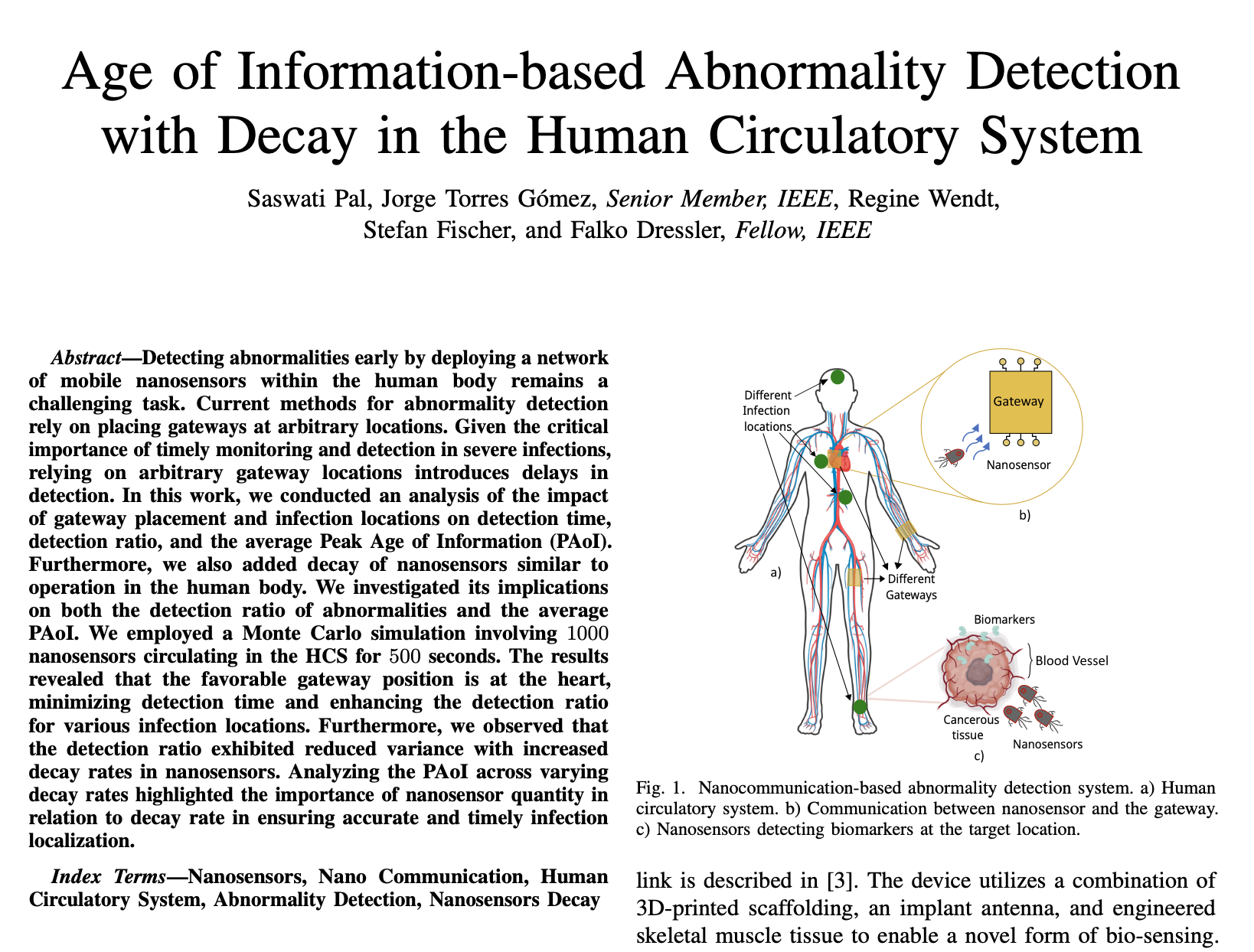
Our article Age of Information-based Abnormality Detection with Decay in the Human Circulatory System has been accepted for publication in IEEE Transactions on Molecular, Biological and Multi-Scale Communications. In this work, we conducted an analysis of the impact of gateway placement and infection locations on detection time, detection ratio, and the average Peak Age of Information (PAoI). Furthermore, we also added decay of nanosensors similar to operation in the human body.
(link to more information)New IEEE Transactions on Molecular, Biological and Multi-Scale Communications article
June 23, 2024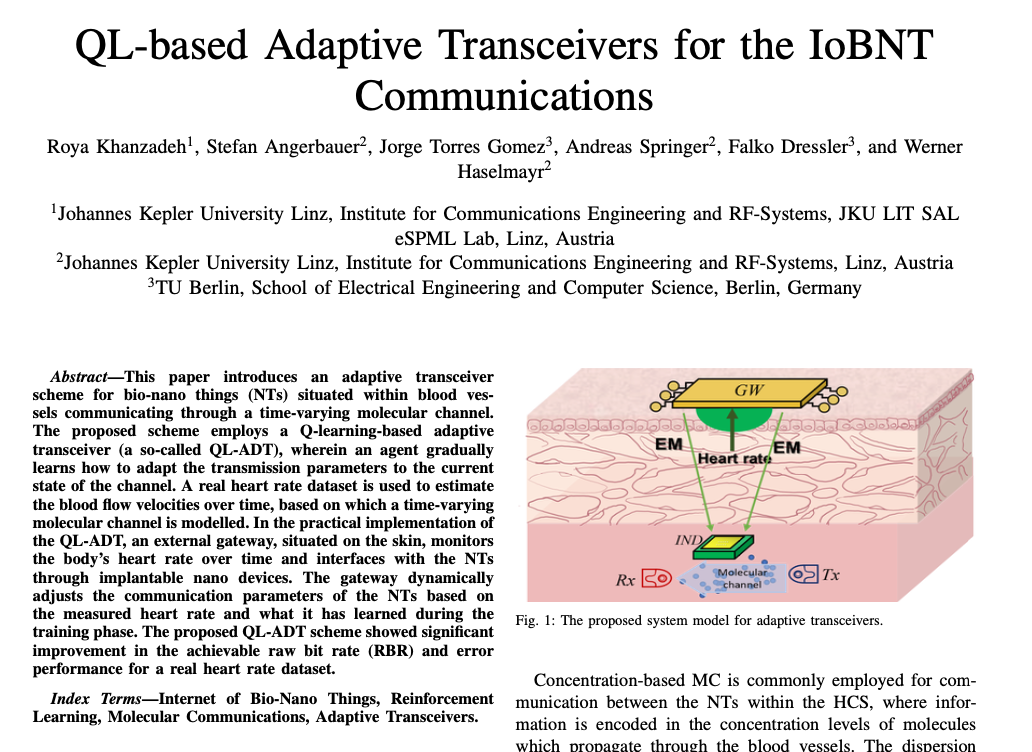
Our article QL-based Adaptive Transceivers for the IoBNT Communications has been accepted for publication in IEEE Transactions on Molecular, Biological and Multi-Scale Communications. This paper introduces an adaptive transceiver scheme for bio-nano things (NTs) situated within blood vessels communicating through a time-varying molecular channel. The proposed scheme employs a Q-learning-based adaptive transceiver (a so-called QL-ADT), wherein an agent gradually learns how to adapt the transmission parameters to the current state of the channel.
(link to more information)New IEEE Transactions on Molecular, Biological and Multi-Scale Communications article
June 22, 2024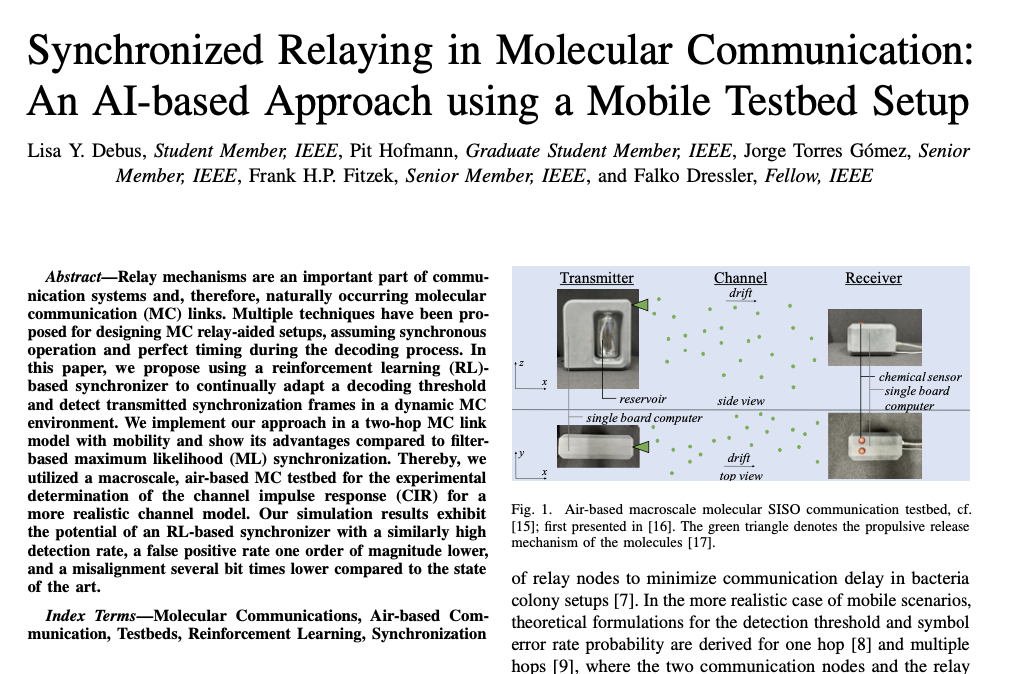
Our article Synchronized Relaying in Molecular Communication: An AI-based Approach using a Mobile Testbed Setup has been accepted for publication in IEEE Transactions on Molecular, Biological and Multi-Scale Communications. In this paper, we propose using a reinforcement learning (RL)- based synchronizer to continually adapt a decoding threshold and detect transmitted synchronization frames in a dynamic molecular communication environment.
(link to more information)Keynote at IEEE ICMC 2024
June 21, 2024
Falko Dressler gave a keynote titled Virtualized Edge Computing as a Basis for Edge AI at the 1st IEEE International Conference on Meta Computing (ICMC 2024), which was held in Qingdao, China.
(link to more information)New IEEE Transactions on Mobile Computing article
June 20, 2024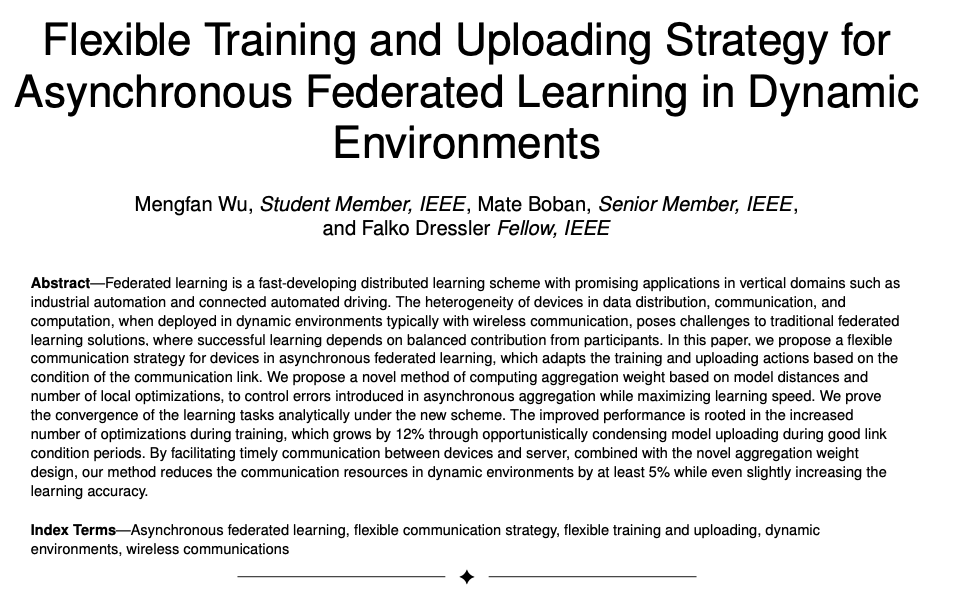
Our article Flexible Training and Uploading Strategy for Asynchronous Federated Learning in Dynamic Environments has been accepted for publication in IEEE Transactions on Mobile Computing. In this paper, we propose a flexible communication strategy for devices in asynchronous federated learning, which adapts the training and uploading actions based on the condition of the communication link. We propose a novel method of computing aggregation weight based on model distances and number of local optimizations, to control errors introduced in asynchronous aggregation while maximizing learning speed.
(link to more information)Tutorial Sessions at KuVS Summer School on Internet of Bio-Nano-Things
June 18, 2024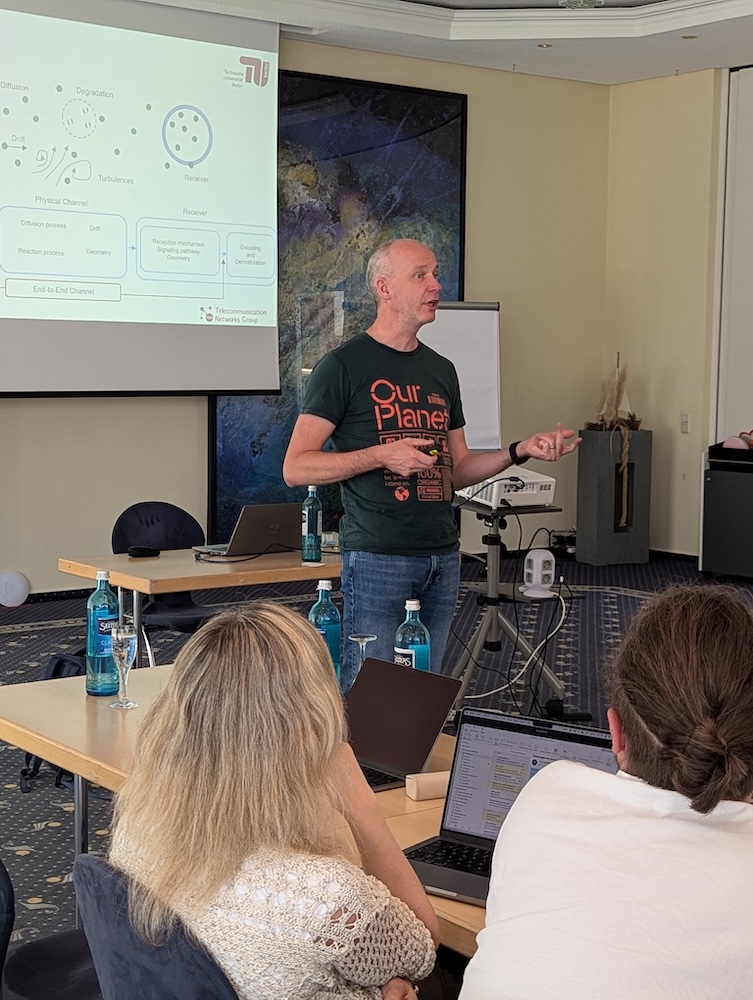
Falko Dressler gace a talk on Molecular Communication for Life Sciences and Jorge Torres Gomez gave a talk on Terahertz communications for intra-body links at the KuVS Summer School 2024 on Internet of Bio-Nano-Things. The TKN team was represented by multiple participants including Sunasheer Bhattacharjee, Lisa Y. Debus, and Saswati Pal.
Load all older news
Last modified: 2024-04-28

